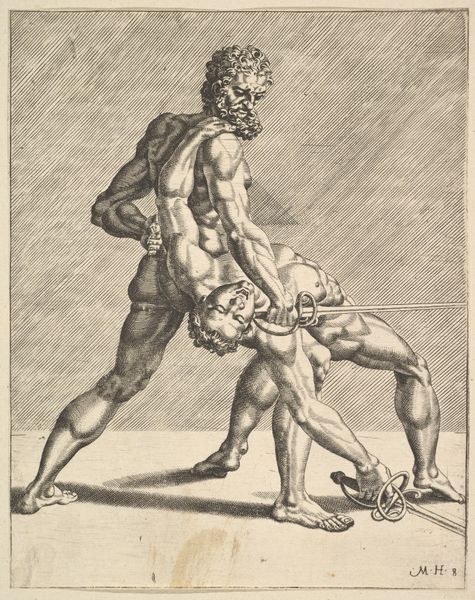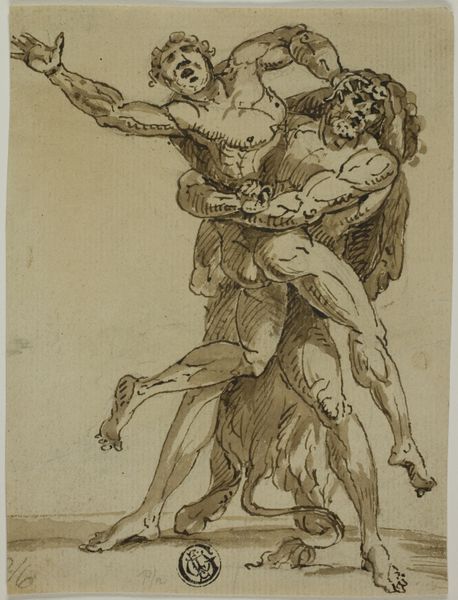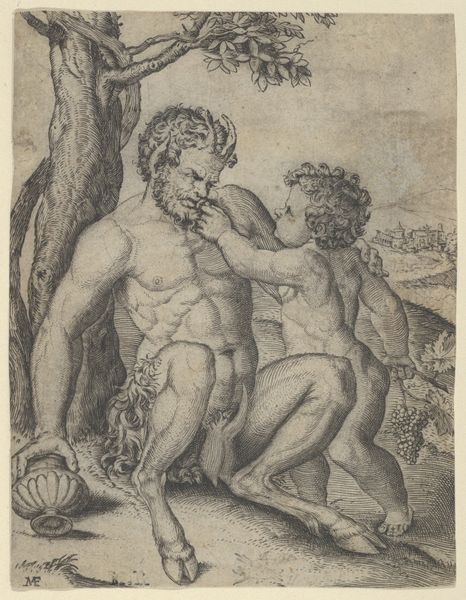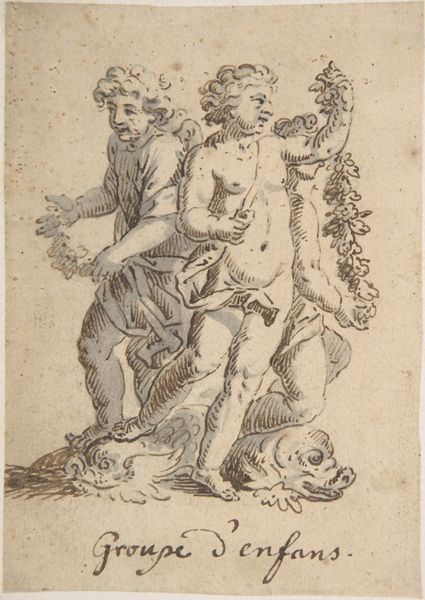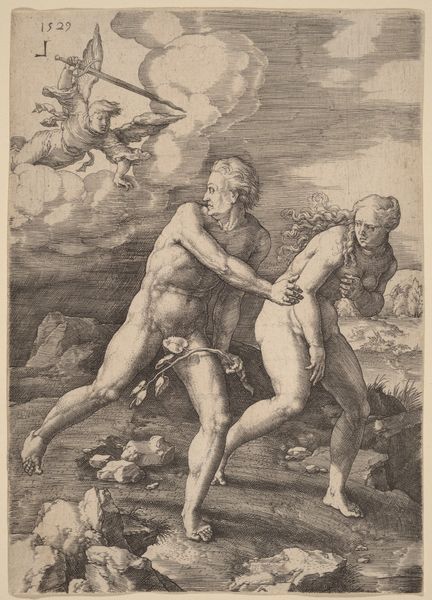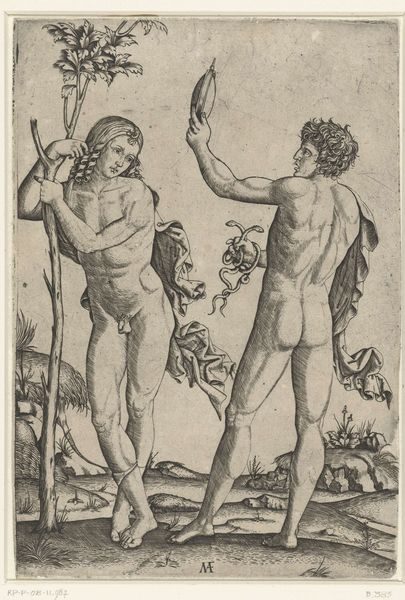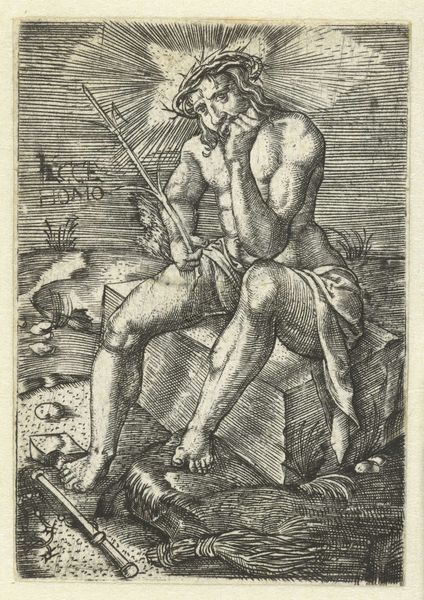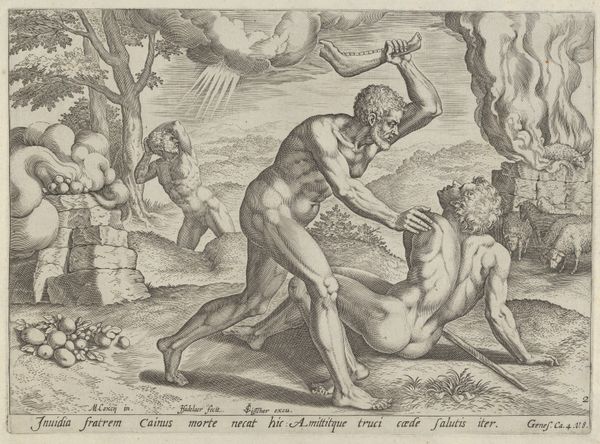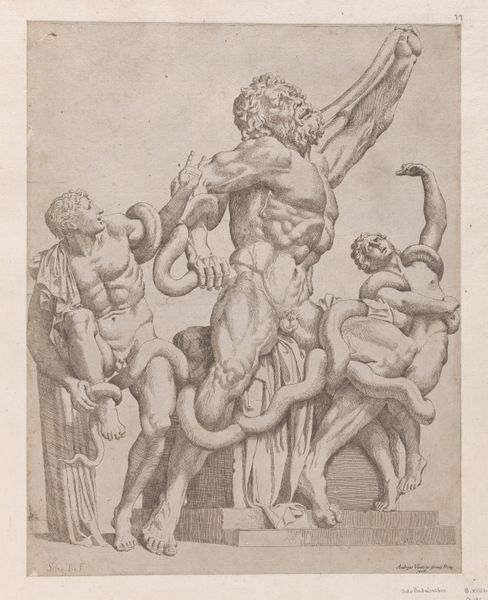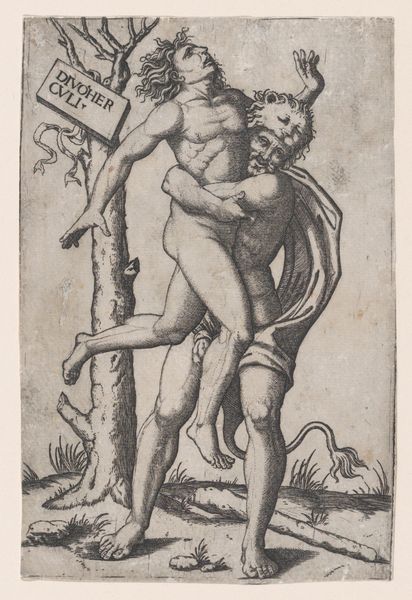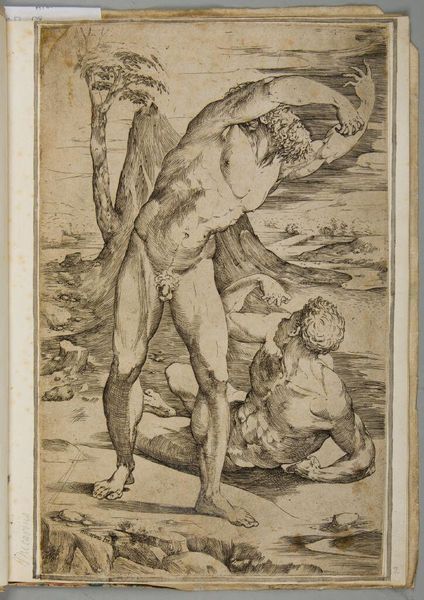
A naked man holding Fortune by the hair and whipping her 1505 - 1515
0:00
0:00
drawing, print, engraving
#
drawing
# print
#
figuration
#
11_renaissance
#
history-painting
#
italian-renaissance
#
engraving
#
male-nude
Dimensions: Sheet: 5 5/8 × 5 3/16 in. (14.3 × 13.1 cm)
Copyright: Public Domain
Curator: Here we have "A Naked Man Holding Fortune by the Hair and Whipping Her," an engraving by Marcantonio Raimondi, dating from 1505 to 1515, placing it squarely in the Italian Renaissance. What strikes you about it? Editor: Well, first off, that title's a bit of a mouthful, isn't it? It feels rather...aggressive, a touch sadistic, really. All that stark monochrome makes it more intense. Is it just me, or is there something unsettlingly vigorous about it? Curator: I see what you mean. Raimondi, as a master printmaker, circulated prints after drawings, and later paintings, by other artists. This one gives insight into how Renaissance artists and their patrons thought about ideas of power. Nakedness represents vulnerability, but also, through classical references, power. Here, the man’s mastery over Fortune signifies humankind’s, usually male, domination of fickle luck. Editor: Hmm, power dynamics indeed. To me it's so blatantly, almost cartoonishly, misogynistic, right? I mean, whipping Fortune, seizing her by the hair... It seems to represent control and subjugation, pure and simple, through the means of brute physical force. But I guess the idea that we are in control is sort of… appealing? Curator: The reception would vary depending on your position in society, wouldn't it? Those in power, mainly wealthy males, perhaps saw this image as justifying their dominance, while others...well, it likely reinforced their subjugated status. Print culture was powerful in the Renaissance because images could be widely disseminated and easily reproduced, thereby furthering political ideologies. Editor: Right, that makes a lot of sense. So you're saying the image of a muscular dude beating up Lady Luck has less to do with an inherent misogyny of men, and more with a generalized struggle over luck. The thing that's fascinating here is how the composition adds to that story. Look how the line of Fortune’s body arches backward. Her curves contrast with the victor's firm limbs and posture, further underlining themes of defeat. I can almost feel her tension. The balls or spheres also enhance the tension: The winner appears rock solid on one, but he uses the plank to gain control by trapping her. Curator: Precisely. The composition does much to underscore the unequal struggle depicted here, highlighting a worldview in which control, specifically male control, over capricious fortune was seen as an ideal, perhaps even an entitlement. Editor: It's disturbing, though, how vividly that entitlement is portrayed. Even now, centuries later, the image makes one feel...uneasy. Curator: Art does that sometimes, doesn't it? Holding a mirror to the complexities and contradictions of human nature. It’s a complex, perhaps troubling, image of its time and speaks to us still.
Comments
No comments
Be the first to comment and join the conversation on the ultimate creative platform.
